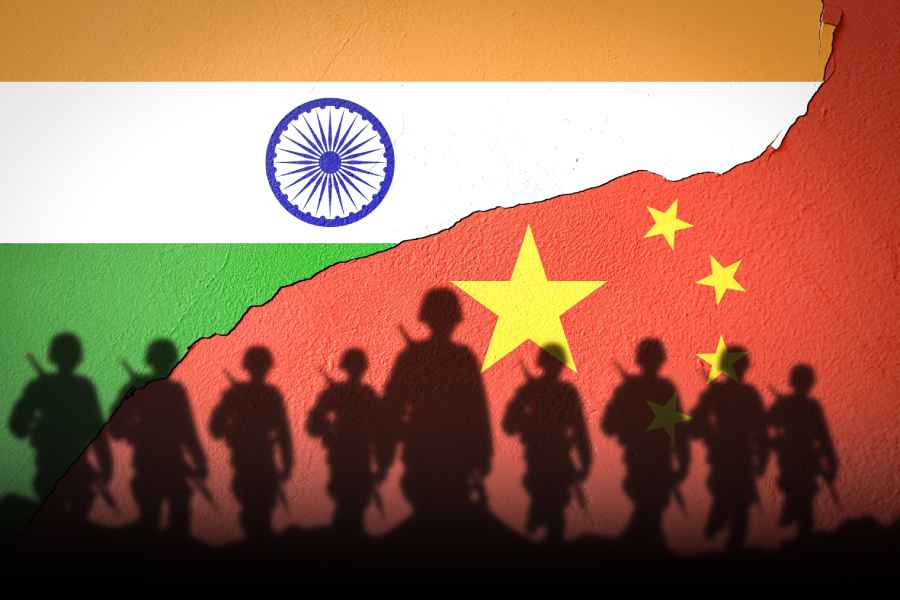External Affairs Minister S Jaishankar and his Chinese counterpart Wang Yi deliberated on the next steps in India-China ties, in the first high-level engagement weeks after militaries of the two sides disengaged from friction points of Demchok and Depsang in eastern Ladakh.
Jaishankar and Wang held delegation-level talks on the sidelines of the G20 summit in Rio de Janeiro late on Monday.
In a post on 'X', the external affairs minister said both sides noted the progress in the recent disengagement of the border areas and exchanged views on the next steps in the bilateral ties.
Indian and Chinese militaries completed the disengagement exercise in Demchok and Depsang late last month after the two sides reached an agreement following a series of negotiations to resolve the festering border row.
The two sides also resumed patrolling activities in the two areas after a gap of almost four-and-a-half years.
"On the sidelines of the G20 Summit in Rio, met CPC Politburo member and FM Wang Yi of China," Jaishankar said.
"We noted the progress in the recent disengagement in the India-China border areas. And exchanged views on the next steps in our bilateral ties. Also discussed the global situation," he said.
In an address at an event on Saturday in Delhi, Jaishankar said the disengagement part of the "problem" with China along the Line of Actual Control (LAC) in eastern Ladakh has been put to rest and the focus should now be on de-escalation.
It is "reasonable" to expect some improvement in the relations following the final round of disengagement, he said but hesitated to say that there could be a reset of the ties.
Indian and Chinese militaries are carrying out one round of patrolling each in Depsang and Demchok, people familiar with the matter said.
At the same time, they said the two sides have maintained their deployment of troops along the LAC and the focus now will be on deescalation of the overall situation.
Each side currently has around 50,000 to 60,000 troops along the LAC in the region.
Talks at multiple levels are underway towards deescalation, the people said.
After India and China reached an agreement on October 21 for disengagement in Depsang and Demchok, Army Chief Gen Upendra Dwivedi said the Indian military is trying to restore "trust" and both sides will have to "reassure each other" to achieve this objective.
Two days after the pact was sealed, Prime Minister Narendra Modi and Chinese President Xi Jinping held talks in the Russian city of Kazan.
The two leaders endorsed the agreement on patrolling and disengagement and issued directions to revive various bilateral dialogue mechanisms, signalling attempts to normalise ties.
In the nearly 50-minute meeting held on the sidelines of the BRICS summit, Modi underscored the importance of properly handling differences and disputes and not allowing them to disturb peace and tranquility in border areas.
The prime minister said mutual trust, mutual respect and mutual sensitivity should remain the basis of the relations.
India has been maintaining that its ties with China cannot be normal unless there is peace in the border areas.
The eastern Ladakh border standoff erupted on May 5, 2020, following a violent clash in the Pangong lake area.
Except for the headline, this story has not been edited by The Telegraph Online staff and has been published from a syndicated feed.











